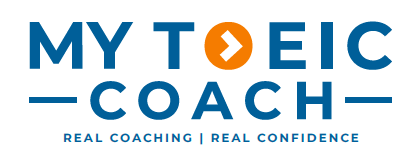What to Do After You Make a Mistake – The Key to Faster TOEIC Improvement
🗝 Before you read:
Look at the article title and image. What do you think this article will be about?
Most students hate making mistakes on TOEIC practice tests.
But here’s the secret: mistakes are the fastest way to improve — if you handle them the right way.
Accelerated Learning teaches that reflection is more powerful than repetition.
High scorers don’t just mark answers wrong — they pause, ask why it happened, and break it down:
Was it a grammar rule? A missed keyword? A vocabulary gap?
Once they understand the cause, they take action.
They write new example sentences, look up grammar points, and quiz themselves again the next day.
This mistake–reflect–repair cycle builds long-term memory and confidence.
Instead of saying “I made a mistake,” say: “I just found my next improvement area.”
Every mistake is a map. Don’t ignore it — follow it.
📋 Understanding meaning
How well do recall and understand?
Why do many students fear making mistakes?
What do high scorers do when they make an error?
How does reflection help learning?
What are examples of follow-up actions after a mistake?
What is the ‘mistake–reflect–repair’ cycle?
What mindset does the article recommend about errors?
🧠 Building Vocabulary
Match the meaning word
Retain
Distraction
Ritual
multitasking
Concentrate
A .Focus
B. Routine
C. Doing many things at once
D. Remember
E. Interruption
✍️ Part 6 – Text Completion
Instructions: Choose the word or sentence that best fits the blank in the text.
Passage 1:
I got Question 6 wrong, but instead of guessing, I decided to ______ it carefully.
A. ignore
B. check
C. fix
D. reflect on
Passage 2:
Each mistake gives you a ______ to build new habits.
A. test
B. sentence
C. memory
D. chance
✍️ Part 5 – Incomplete Sentences
Instructions: Choose the best answer to complete each sentence.
After making a mistake, it’s important to understand the ______.
A. answer
B. score
C. level
D. causeInstead of avoiding mistakes, students should use them to find ______.
A. books
B. harder tests
C. similar questions
D. improvement areas
✍️ Part 7 – Reading Comprehension
Reading Passage
Short Reading:
When preparing for the TOEIC, it’s natural to want perfect scores.
But success comes from failure — as long as you stop to learn.
Each wrong answer is like a flashlight showing you where your understanding is weak. Good students don’t fear it; they fix it.
They ask questions, find examples, and review their answers slowly. These steps help turn confusion into mastery. Next time you miss something, pause and study it. That moment could be your breakthrough.
Questions:
What does a mistake show you?
A. That you failed
B. That the test is too hard
C. Where to improve
D. That you need a tutorWhat is the best response to a wrong answer?
A. Skip it
B. Guess again
C. Write it again
D. Try a new testWhat do good students do when they’re confused?
A. Stop studying
B. Ask questions
C. Give up
D. Memorize the answersWhat kind of mindset does the article promote?
A. Perfectionism
B. Quick guessing
C. Growth
D. Avoidance
🧠 Self-Reflection
The most important step in any lesson is not just completing the task, but making meaning from it. Take 2–3 minutes to reflect on your learning today. You don’t need perfect answers — just honest ones. This is how high performers grow.✍️ Write in a notebook, type below, or say it aloud — what matters is doing it.
When I make a mistake, how do I usually react?
What is one mistake I made recently?
Did I reflect on it or just move on?
What action could I take to repair it?
How can I turn today’s errors into tomorrow’s strengths?


